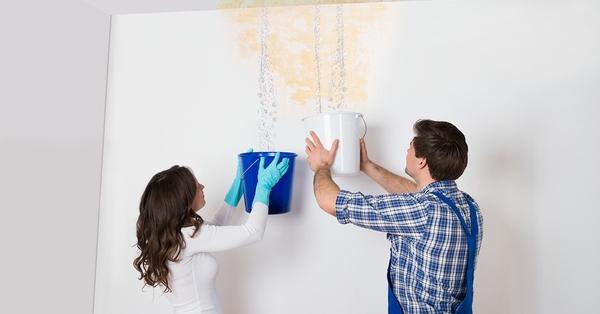A plethora of reasons could be behind your water leak. But the first thing you need to do is stop running any water in your house. Turn off all faucets and appliances then check your water meter. If it continues to change despite everything being turned off, you have a leak somewhere in your home. For help with plumbing, https://www.fixitrightplumbing.com.au/blocked-drains-melbourne/ and sites alike have professional services to detect blocked drains, leaks, or any plumbing problems.
Pooled Water
Seeing pooled water is one of the most obvious signs that you have a leak. Oftentimes these leaks occur in or around appliances that are constantly using water, like your washer and dishwasher. A puddle near these appliances can easily lead to significant damage over time.
Hidden leaks inside household plumbing lines can add up to a huge amount of wasted water. It can also cause building damage that you might not even notice right away.
A great way to test for these hidden leaks is by looking at your water meter. Make sure that all of the faucets and appliances in your home are turned off, then check the meter. If the dials have moved despite all of the appliances being turned off, this indicates that there is a leak somewhere between the house and water meter. The leak could also be outdoors.
Wet Floors
When water reaches the floorboards, it can damage the flooring and create a breeding ground for mold and mildew. It can also lead to sagging floors and ceilings, high water bills, and a decrease in water pressure.
If you find wet spots on your floor, first make sure that you’ve turned off all of the water sources in the home. Then, check the water meter and wait three hours. If the meter reads differently, you probably have a plumbing leak.
Leaking pipes can project a hollow, hissing sound as the water moves through them. Listen for this noise, especially when you’re near a sink or toilet. It’s often the earliest sign of a leaking pipe. It can indicate that the pipes are old or worn out, that there’s a blockage in the line, or that there is a leak in your roof system. Regardless of the cause, a plumber should be called to take a closer look at the problem.
Dark Stains
Many times a leak will lead to black or dark brown staining on walls and ceilings in areas that can’t be easily seen. If this is accompanied by a musty smell, this could indicate that mold is growing because of excess moisture and humidity. You can test whether the stains are soot or mold by rubbing a small section of the wall with bleach and a cloth. If the black color goes away, it is soot; if the stain remains, it’s probably mold and needs to be treated accordingly.
If you’re not sure what the stains are, try turning off everything that uses water and then check your water meter again. If it’s still rising, there may be a problem with your plumbing system. You may also want to consider using an oil-based stain blocking primer on the affected area.
Minimal Damage
Leaking water that is causing minimal damage is often due to older galvanized pipes or rust. If these leaks are left unattended they will lead to more severe problems and can cause structural issues in your home.
This kind of water leak may also result in damp drywall or carpeting. Using air fresheners or cleaning the area may help, but it’s important to get these leaks fixed as soon as possible to prevent mold and mildew from growing and to avoid any structural damage to your home.
The first thing you should do when you notice this is to shut off the water supply in your home. Typically, you can do this by finding the water shut off valve in your basement or garage (for homes with water meters located outside) and turning it off. You can then check your water meter again in about an hour. If it is still showing a change, there is a leak in your house.
